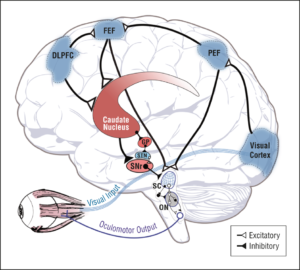Previously I had talked about the 4 main triggers for migraines (among other symptoms).

Today I want to talk about another trigger.
Emotions.
Emotions are a very important piece of our brain, our response to the world, and to our well being. With proper emotional responses we are able to develop relationships, build a family, succeed at our careers, and have proper responses and reactions to things people do and say.
With improper emotions, we essentially develop the opposite. We struggle to develop relationships, careers suffer, family suffers, and our responses and reactions turn into anxiety, fear, anger, personality and behavior changes.
When emotions are left to their own desires, we can develop debilitating anxiety, gut problems, pain, headaches, seizures, autoimmunity and movement disorders etc. Most of the time, these are *just* neurological pathways that have been developed from an early age, an emotional or physical trauma, or long term poor health that has resulted in altered neurological pathways. Some people are susceptible genetically to these emotional changes or inability to control their emotions, but I would say this is a very low percentage of individuals.
The first thing I will say, is that we cannot always help those in this position, but we have individuals we can refer to whether it is a psychologist, psychiatrist (not often), EMDR, or an N.E.T. practitioner. NET stands for Neuro-Emotional-Technique. It is a technique developed to help individuals heal from emotional struggles. It is NOT mainstream medicine, and even in the alternative world isn’t necessarily understood, but it is very powerful and effective.
One of the things we utilize in the office is a modified EMDR approach. It utilizes the power of the cerebellum and visualization (happy, happy, happy thoughts only!), which has shown to be more than 40x more powerful pathway than actually doing something. We couple this with deep breathing and eye movements specific to the individuals neurological findings.
The base modified EMDR protocol for dampening of anxiety, emotions, and to calm the sympathetic response is the following (actual treatment can differ once established as a patient- but these are the basic guidelines):
-
- 448 Breathing– 4 seconds inhale through nose, 4 seconds holding, 8 seconds breathing out through mouth. Ideally perform this sitting down in a calm neutral/happy place. Repeat 2-3 times, if you get light headed, decrease the # of repetitions.
- Visualization- Visualize a very happy time in your life, recent, or past, and imagine, very intently that you are actually THERE. Relive the happy emotions, experiences and feelings that you had in that exact moment. Do not think of anything else.
- Horizontal eye movements- you will find 2 targets in front of you about eye level, and you will shoot back and forth between them rapidly (called saccades, or fast eye movements*). You will do this up to 10x (up to 5 or 10 each side- you won’t hurt yourself). Saccade eye movements are generated in the frontal lobe, which is the emotional control center, so you are basically firing up your frontal lobe to help control your emotions, and rewrite the old ones to be happier and healthier.

NOTE- Perform all exercises above AT THE SAME TIME in order to maximize effectiveness
Ideally you will perform this at ANY sign of a trigger, anxiety, emotional response, etc. So if you have 15 triggers per day, you will do this at least 15x per day. Makes sense right? We must rewire all the triggers of this reaction.
The point of doing this is the utilize deep breathing to promote parasympathetic activity (resting and digesting) and improve blood flow to the brain and gut, while activating the lower brainstem (pons and medulla are parasympathetic in nature).

The point of using visualization is to activate systems that promote happy and healthy neurochemical activation– happy hormones
like serotonin, and to dampen the stress and inflammatory neurochemicals like cortisol and epinephrine/norepinephrine which promote the sympathetic response.
Eye movements are linked to frontal lobe and behavioral function. When you fire things together, they wire together. So by activating breathing, positive and happy thoughts, and rapid eye movements, you are essentially rewiring your brain to be happier and healthier. You’re activating the frontal lobe, prefrontal lobe, hippocampus, nucleus accumbens, amygdala, brainstem, temporal lobe, among others, to help decrease stress, anxiety, and ultimately this will lead to a reduction in your other symptoms.
We hope you are able to accomplish these exercises and they help improve your well being mentally, physically, and emotionally.

